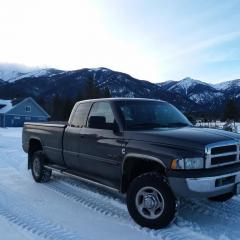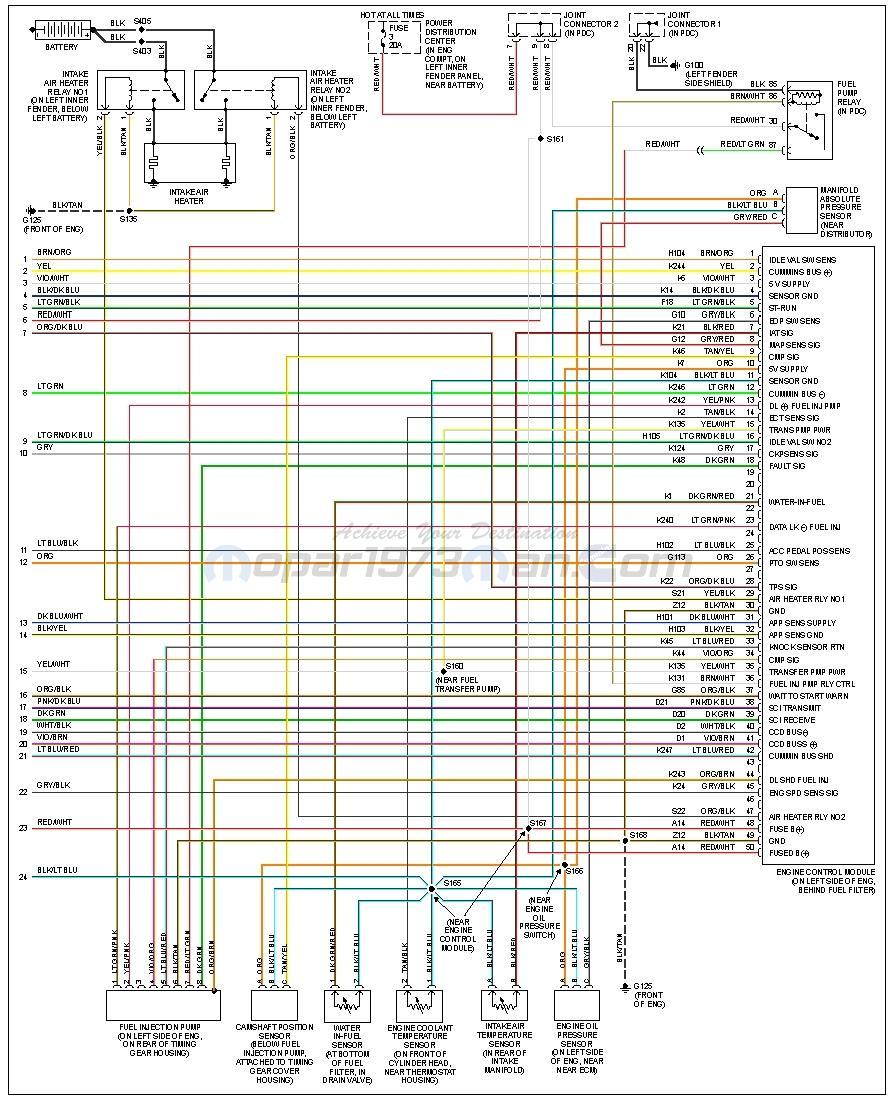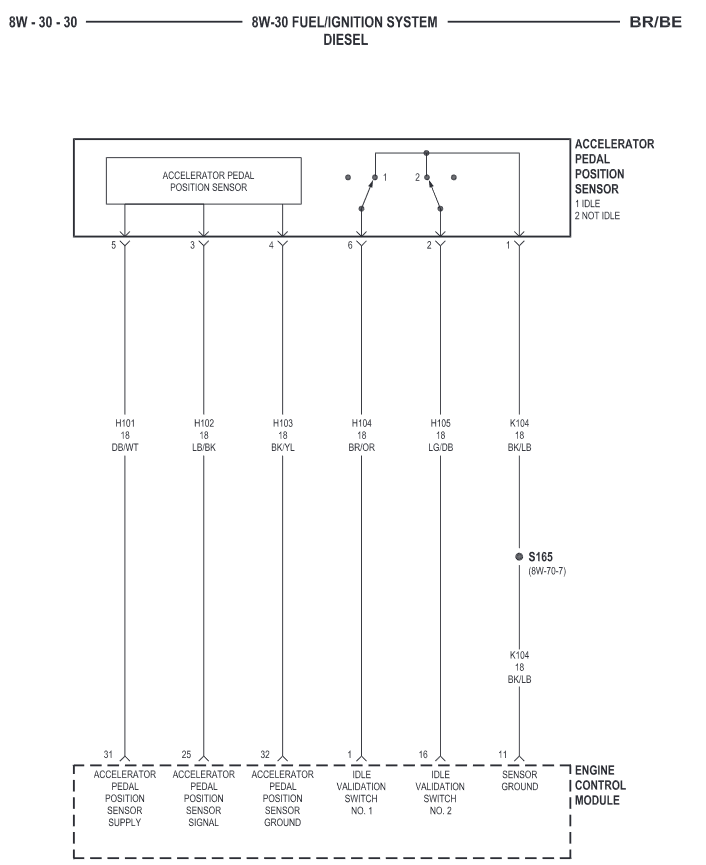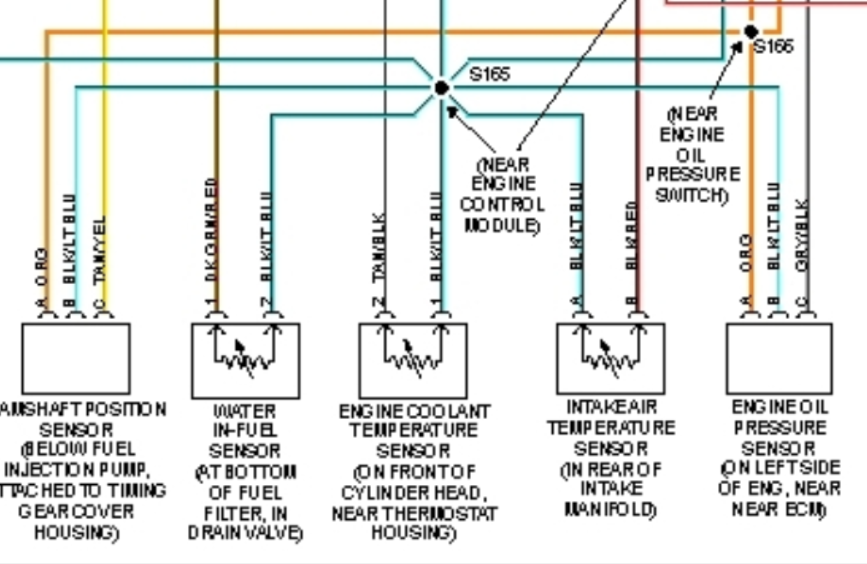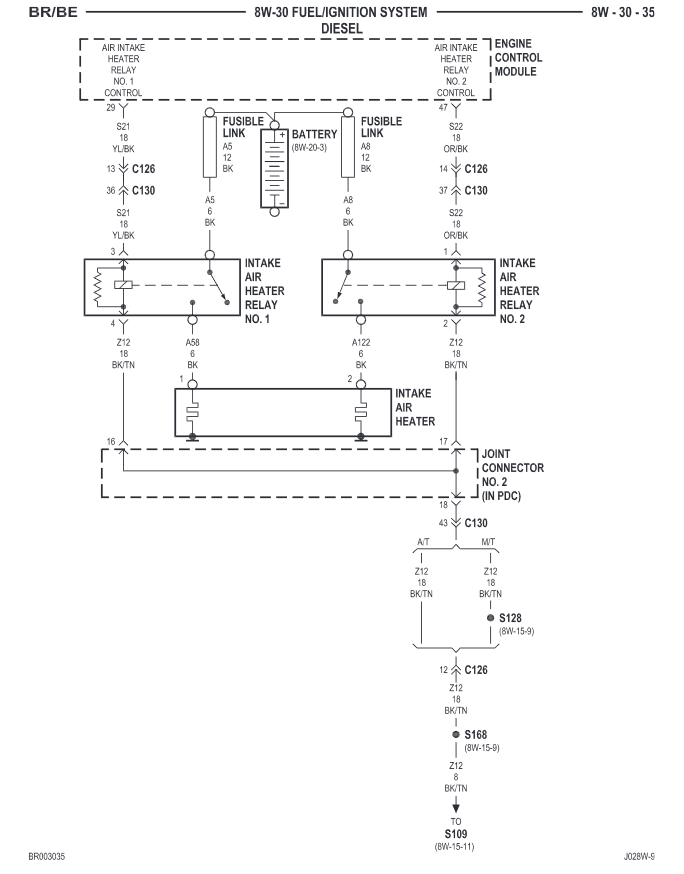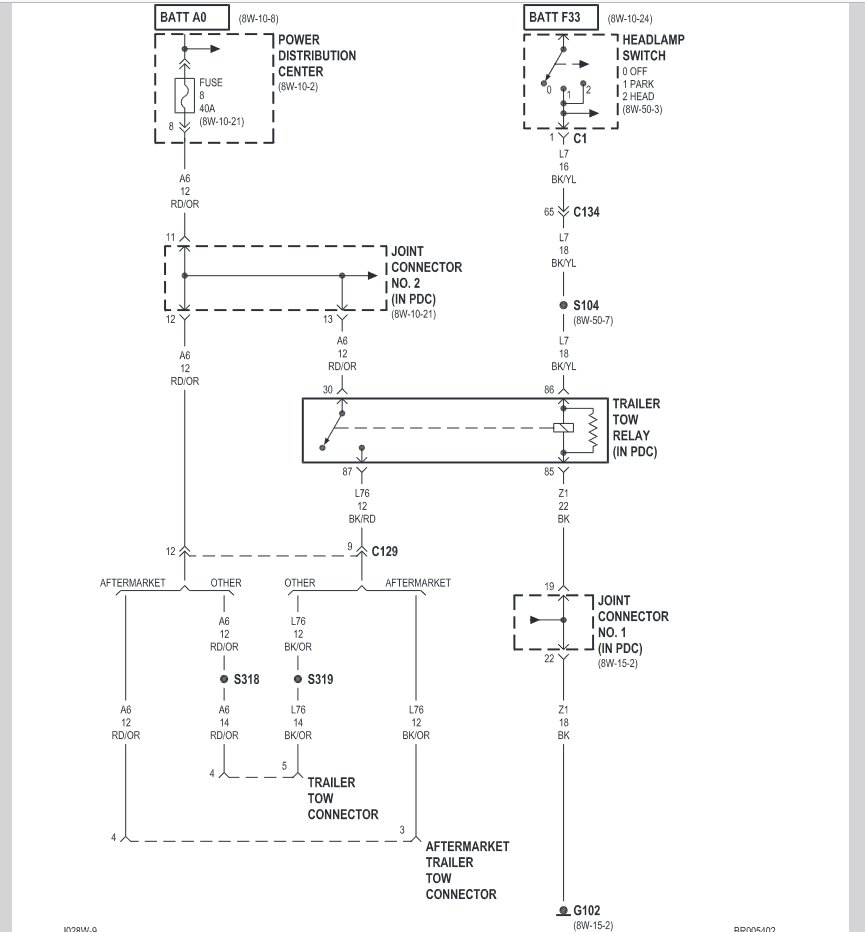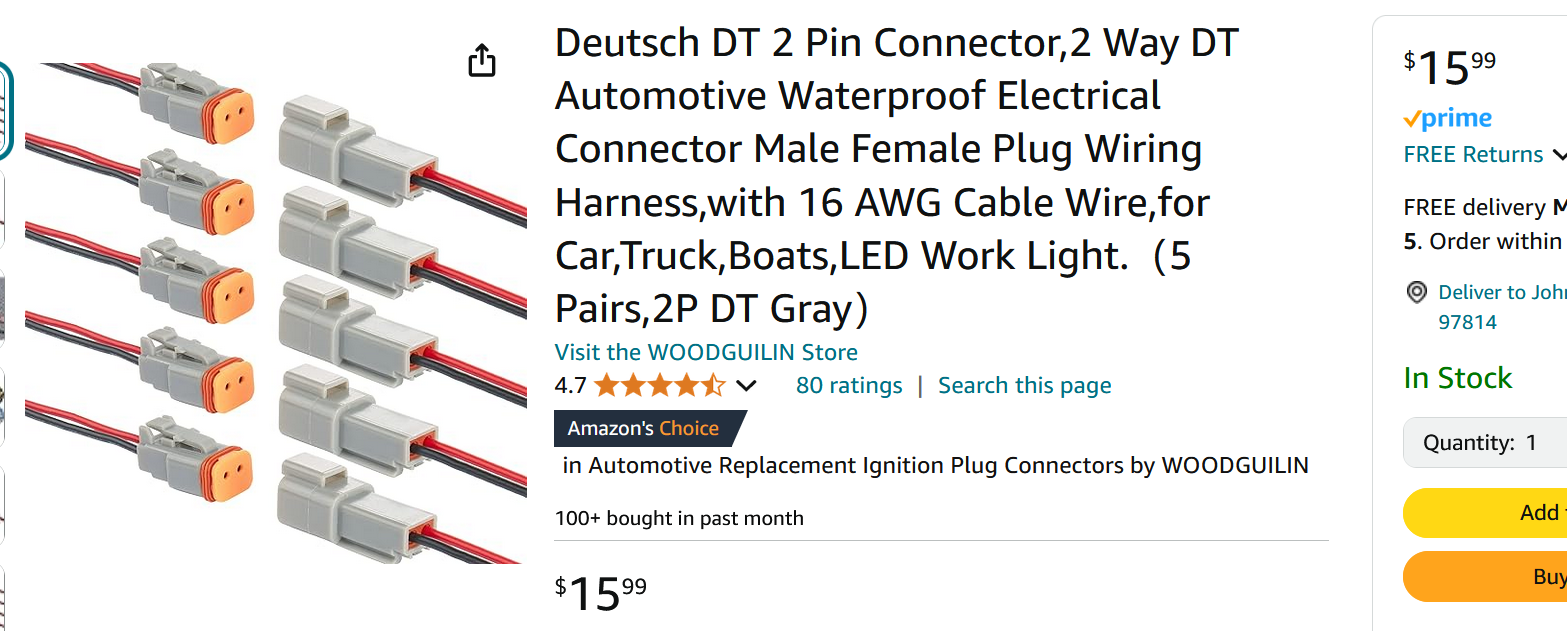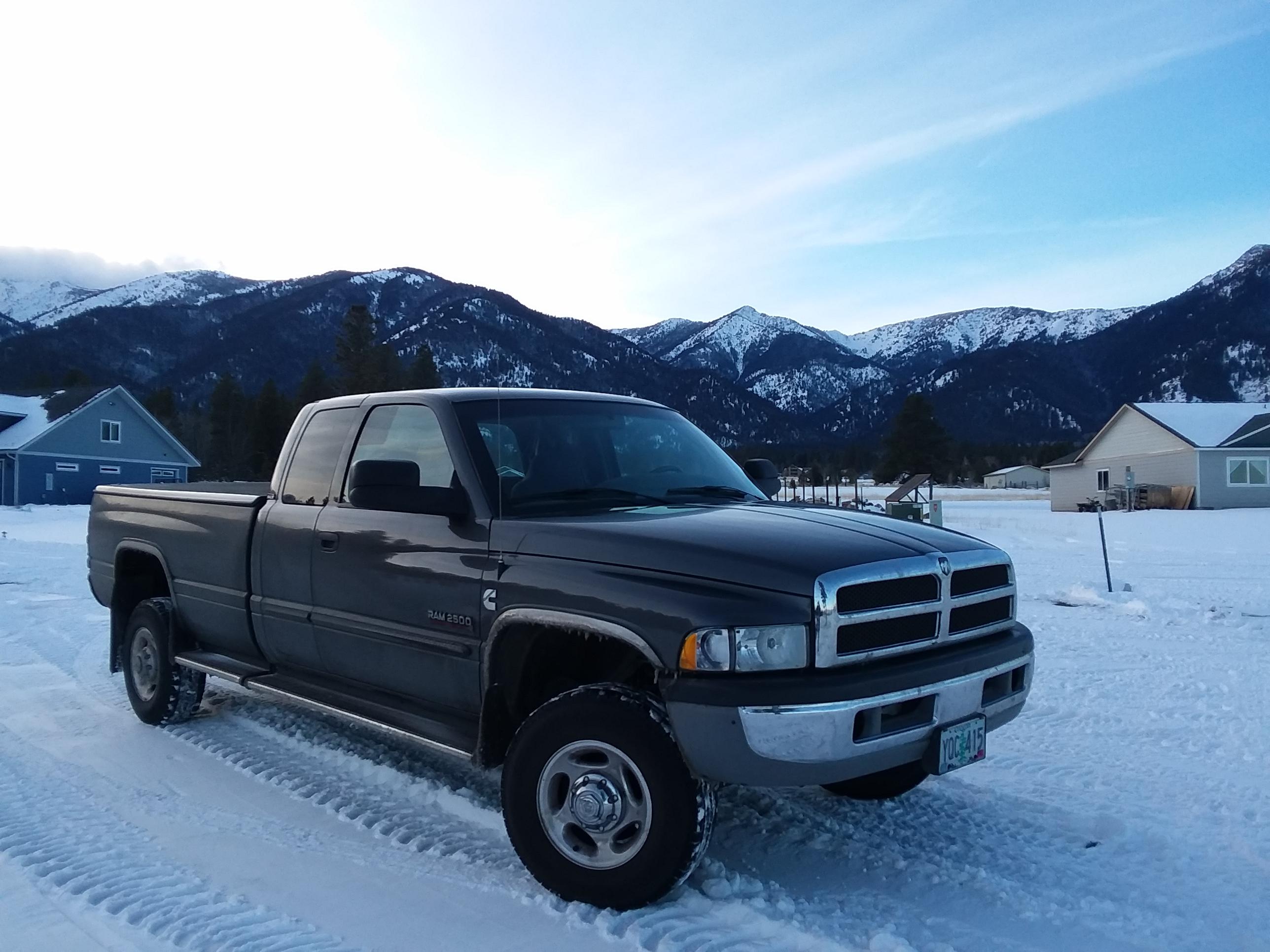
Everything posted by Tractorman
-
Intermittent dead pedal and hesitation
To aid in troubleshooting, it may be worth your while to remove the Quadzilla completely from the system for awhile - at least until you get this problem resolved. The Cummins sensors are very reliable. In fact, I still have all of the original sensors in operation on my truck. You said that you were going to check for codes with a Snapon scanner after you put the pump back in. Has that been done? - John
-
5v reference circuit? Ecu? All of the problems!
Since all of your codes point to a 5 volt supply issue, I would definitely check out the 5 volt supply and ground. Also, I would check the supply voltage and ground for the ECM and look over the general condition of the electrical system (battery terminals, cross over cable, grounds, etc.) Splice 165 (a problematic splice) is part of the grounding circuit for the ECM and other sensor grounds of the 5v system. Auto Computer Specialists (look in the Vendors section on this site) rebuilds ECMs . New ECMs are not available. Lift pump cycles 1/4 second with key in "run" position, approximately 25 seconds in "bump start" position. Just round numbers. - John
-
Alternator failures
No fuse, but you can simply disconnect the two heavy wires that feed each intake heater. Disconnect them at the positive terminal on the driver side battery. I will repeat what I said in one of my previous posts, "The Bosch and Denso alternators are of excellent quality." The same goes for the Denso Starters. Unfortunately, many people don't realize the value of these OEM alternators and starters in terms of a long dependable life. The first sign of an electrical problem has them purchasing a cheaper re-manufactured alternator or starter from a chain auto parts store. From there, it usually goes downhill. Those re-manufactured components are usually of mediocre quality at best. The worst part of the transaction is that the truck owner is giving up a quality component in trade for a not-so-quality component under the guise of "lifetime warranty". So, either one of two things are happening in your case. You are getting poorly re-manufactured alternators, or you have a serious electrical problem that needs to be addressed. I would recommend checking the condition of all your battery connections - positive and negative. And, check the condition of the crossover cable. Just because an electrical connection is tight does not mean that the connection is good electrically. There could be corrosion that is not visible until the connection is taken apart. - John
-
Intermittent dead pedal and hesitation
Have you used a quality scanner for checking codes? Not all scanners are equal. Or, have you used the ignition key method to read codes in the odometer? - John Since your problem is intermittent, it is possible that the pump could be defective and still pass the test. Don't dwell on this, but don't disregard it, either. Have you re-checked your work related to the W-T wiring modification? - John
-
2000 Cummins Surge/Dead Pedal
I would do this step, first. It would be good to know whether or not a false signal is being generated at idle. Since the DTC states, "Idle Validation Signals Both Low Problem detected with idle validation circuits within APPS", I would double check the wiring condition and connections from the ECM to the APPS - and, maybe try another APPS, if you have one available. Also, I believe that you said you did the W-T wiring modification. If so, re-check your work regarding Splice #165 - the ground for the APPS, ECM, and other sensors. - John
-
2000 Cummins Surge/Dead Pedal
P0222 (M) Idle Validation Signals Both Low Problem detected with idle validation circuits within APPS. I would definitely find out why you are getting this code. If the ECM does not get a signal for idle validation, then the engine rpms will not go to idle. Which APPS are you using now - OEM or TImbo? Either way, you could try adjusting the mechanical stop where the APPS is located in the engine compartment. Back it off an extra distance to ensure the throttle will activate the idle validation switch that is built into the APPS. I seriously doubt that. An injector misfiring would likely cause a miss or a timing knock. Engine oil feeding a cylinder wouldn't allow the engine to shut off immediately when you switched off the ignition. I think the P0222 in telling you something. Double check all of the pin conditions in the connector to the APPS. - John
-
Alternator failures
I just used a switch that I had laying around. A push button momentary switch would work well. Place it where it is convenient to use. The switch can be light duty, as it only operates the coil portion of the intake heater relays (less than 500 milliamps of current). I disconnected terminal # 1 (OR/BK wire) on relay # 2 and terminal # 3 (YL/BK wire) on relay # 1. I sealed and taped the ends to protect them for future use. I provided a light gauge wire (18 gauge) from an unswitched source, through a 5 amp fuse, and then to the momentary control switch. From this switch, I continued with the 18 gauge wire to the coils of both intake heater relays. Wired this way does set DTC P0380 and P0382, but it does not illuminate the MIL. From this point on, you can be the boss and use the intake heaters when you feel it is necessary. The ECM controls when the intake heaters operate. If the ambient air temperature falls below 60° F, then the ECM will command both intake heaters to operate for a determined amount of time when the ignition switch is turned on. After the engine is started, the ECM will cycle the intake heaters (one at a time alternately - called post cycling) until either the vehicle speed exceeds 20-25 mph, or engine coolant temperature reaches a specific value. The air intake heaters exist primarily for emissions and occasionally they are needed to assist in starting a very cold engine. - John
-
Alternator failures
Give us some repair history on your electrical system. How old are the batteries? Have you verified that all battery and ground connections are good? How about the crossover cable? Have you done the W-T wiring modification? OEM wiring charges the driver side battery - the W-T wiring modification charges the passenger side battery. I personally don't trust over-the-counter re-manufactured electrical parts. They can be problematic regarding quality. If I wanted an alternator or starter rebuilt, I would use a quality Auto Electrical shop in the vicinity. The Bosch and Denso alternators are of excellent quality. The Bosch alternator (the original still controlled by the PCM) on my truck is pushing 400,000 miles with only replacing alternator bearings and brushes. When you do replace this alternator (I think you already have), be sure to monitor voltage at both batteries, don't just rely on the dash voltmeter. I would disconnect the grid intake heaters temporarily just to help with the diagnosis. It is not necessary to take any of these precautions. Even when you do plug it in overnight, the grid heaters will still post cycle for a period of time after the engine is started. A new Bosch or Denso alternator will easily last 200,000 miles under these conditions. Even though it is not necessary, I have installed a manual momentary switch to operate the grid heaters on my truck. I did this to reduce the electrical load on the alternator and because grid heater operation isn't necessary 90 per cent of the time for starting the truck, or for post cycling after the engine is running. - John
-
Hunting at idle when in gear
Before replacing the APPS, you wrote: After replacing the APPS with a Timbo unit, you wrote: Has the "skipping and bucking" disappeared? What horse power injectors are you using? As @Great work! mentioned, high horse power injectors can cause hunting. Different torque converters can apply different engine loads when the transmission is placed into gear. - John
-
ECM Advice
Great detail on your reply. Another thought. Have you tried using the key switch to read codes in the odometer display? 2001 is a questionable year for using the key switch to read certain codes. Some 2001 models read the PCU only, and other models read PCU and ECU. If your truck happens to read both, maybe you can see the companion code in the ECU. If your truck shows both, just be sure to be patient and wait for both PCU and ECU to say "DONE". Regardless, it does seem there is a hidden ECU code that needs to be seen. Just don't know how to get there. - John
-
Another bad VP?
Do you know if your VP44 pumps were refurbished - as in a new PSG vs. refurbished PSG, and was the pump run and the PSG calibrated to the pump on the Bosch 815 test stand? - John
-
ECM Advice
On this ECM, you say "truck runs". Does this mean everything is normal and the truck runs good? Just a 1693 code? Does the code set the MIL (Malfunction Indicator Lamp)? This could be normal lift pump voltage while the engine is cranking. The ECM reduces voltage to the lift pump by using pulse width modulation during engine cranking to prevent possible hard starts under heat-soaked startups. The ECM supplies full voltage to the lift pump after the engine is running. Is you lift pump fuel system completely stock? Does the ECM drive the lift pump directly? - John
-
Anyone heard from MoparMan?
He has posted as recently as last Wednesday, the 21st. - John
-
2000 Cummins Surge/Dead Pedal
Well, that's a bummer! Any codes? You could hook up a scanner and monitor the throttle position on the display. Drive the truck and when the symptoms occur at idle, see if the per cent of throttle changes on the display, or if it remains steady as it should. I think that you may still be getting an electrical interference of some kind. I don't know much about the ECM operation, but I think the ECM has the capability to monitor and weed out false signals. However, if too many false signals are being sensed in a specific amount of time, the ECM may consider the signals to be valid. The APPS provides one of those signals. It may be worth a try to leave the ignition switch in the "Run" position and slowly depress the throttle to the floor one time and release. Turn the ignition switch off and then start the engine. This is not a fix, but if there is electrical interference with the APPS, then the symptoms may disappear for awhile. This may help to diagnose what is really going on. - John
-
Another bad VP?
P0122 (M) Throttle Position Sensor Voltage Low Throttle position sensor input below the acceptable voltage range. The "M" (Malfunction Indicator Lamp) may or may not light dependent on EPA requirements. This definitely falls in-line with a dead pedal symptom when cruising at a common road speed under a light throttle - worth checking out. The OEM style APPS can get a worn spot on the potentiometer when driving at repeated highway speeds over long periods of time. How well did the engine run on your 30 mile "limp"? The VP44 internal vane pump (called "feed" pump by Bosch) would still bring in plenty of fuel through the dead lift pump as long as there was not a severe restriction inside the dead lift pump. If the engine performed normally on the 30 mile trip, then there may be no harm done to the VP44. Can't really offer any help with the hanging injectors. What injectors are you currently using and how many miles on them? - John
-
Another bad VP?
Have you checked for trouble codes? If so, what are they? Most of the time (not always) codes will show up when a VP44 injection pump begins to fail. - John
-
Slight stutter upon startup occasionally
When the stumbling and dying occurs, does it happen after the engine has been shut off for a long period of time? If so, there is a possibility that air is entering the fuel system somewhere, maybe related to the R&R of the VP44. Did you perform any other work when you replaced the VP44? Are you getting any trouble codes? - John
-
All pins on 7 round trailer plug socket work except for running lights
-
Bad wheel bearing or what?
It might be worth a try to swap front wheels left to right to see if there is a difference in sound location. What speeds do you need to attain to make the sound occur? Also, is it possible that something is rubbing (not related to wheel bearings) due to the lean of your truck when turning left? - John
-
Ecm and Dead Pedal issues
There should be a test port located on either the fuel filter housing or the VP44 inlet port. A 0-30 psi gauge would be suitable for the test. If there isn't a test port available, there is an aftermarket banjo fitting with a 1/8" female pipe port that will replace the fuel inlet fitting on the VP44. A lot of VP44 truck owners either have a dash-mounted fuel pressure gauge or a low pressure warning light for the lift pump. - John
-
Ecm and Dead Pedal issues
The P0216 code is related to injection pump timing - usually a fault inside the VP44 fuel injection pump. When that code sets, the ECM will likely de-rate the engine output. So, yes, that code will most likely be a VP44 pump failure. Before condemning the VP44, verify that you have at least 5 psi lift pump fuel pressure, especially at higher engine loads. - John
-
Ecm and Dead Pedal issues
A "dead pedal" symptom is the engine dropping to an idle and staying there. What you are describing is likely to be the ECM commanding the engine to operate in a "de-rate" condition. This can be caused by many things, but not likely to be the ECM. Need to know if you have any trouble codes displayed. This would greatly help with what direction to go with diagnosing. If there are no trouble codes set, then I would start looking for mechanical issues. Take your time - don't focus on just the ECM. - John
-
2000 Cummins Surge/Dead Pedal
Congratulations! - John
-
FASS Install
Agree with the potential serious accident / starting a fire scene if the the lift pump relay is wired to a source that is in the "Run" position of the ignition switch. Back in the early 2000's when Chrysler Daimler was warrantying VP44 injection pumps, they also retrofitted an in-tank lift pump at the same time, which was also covered by warranty. The wiring connector from the removed engine block-mounted lift pump was connected to the coil part of a new relay that was included with the retrofit. This kept the integrity of having the ECM control the lift while at the same time reducing the electrical load of the ECM. From what I have seen in the past is that FASS does not provide instruction to wire the relay in this manner. Personally, I think it is a better method to wire the lift pump control circuit to the relay coil for the added safety. - John
-
FASS Install
Your OEM engine block mounted lift pump is operated directly by the ECM. Lift pumps typically draw 8 to 12 amps depending on make and model. A relay will remove this heavy electrical load from the ECM. You can still use the ECM to trigger the coil on the relay (only about 200 milliamps). Deutsch 2-pn connectors should match your 2-pin connector on the OEM lift pump and are available on Amazon. This way you can easily extend the OEM wiring harness to wherever the relay is mounted. - John


